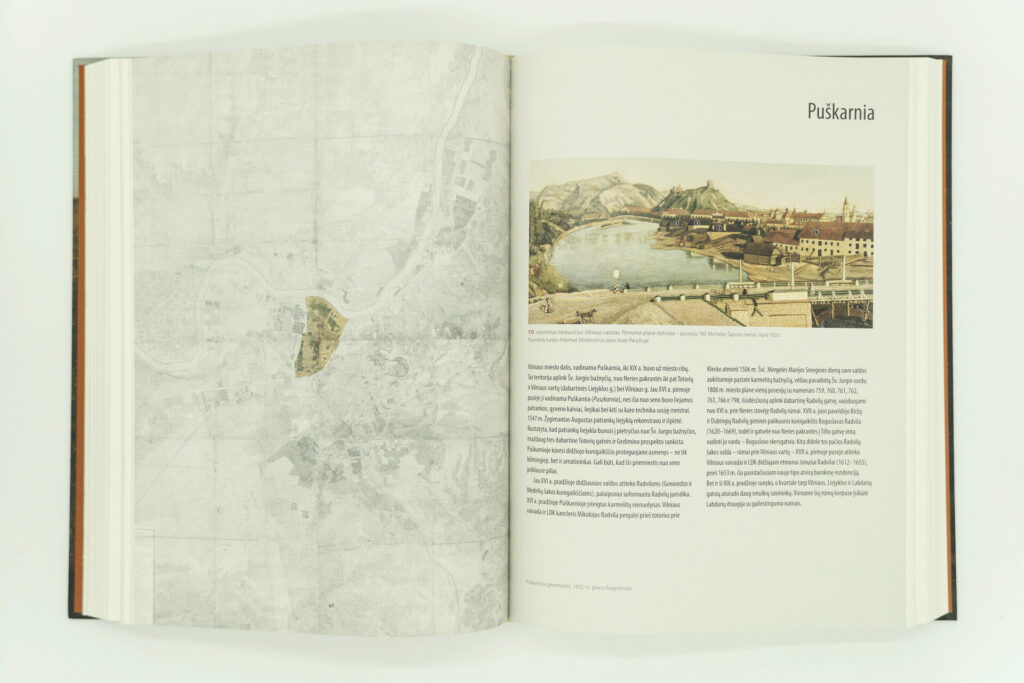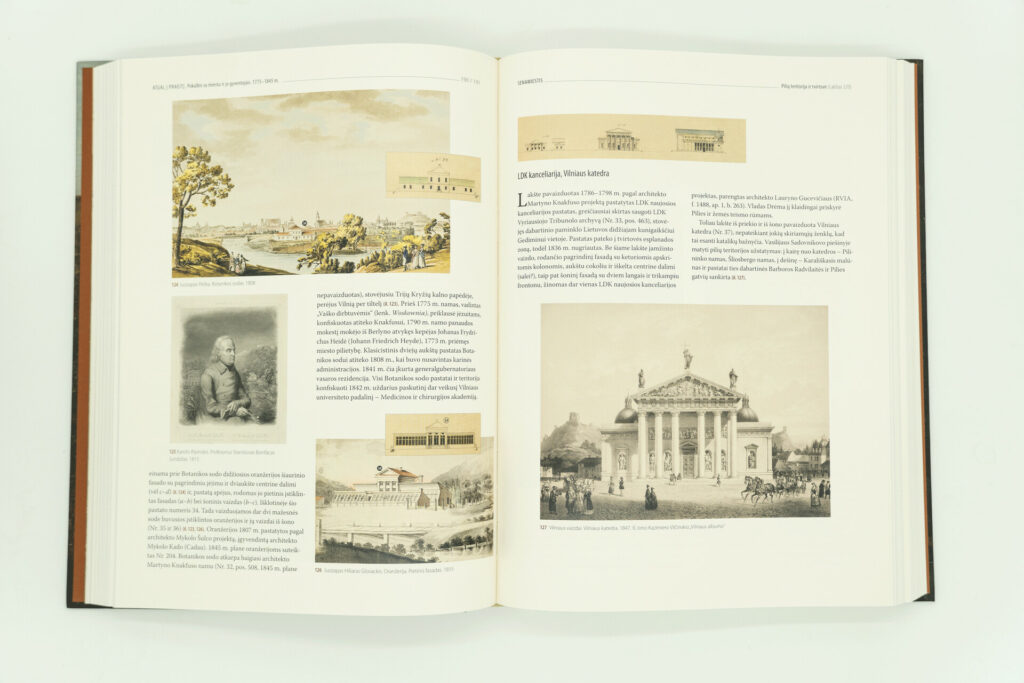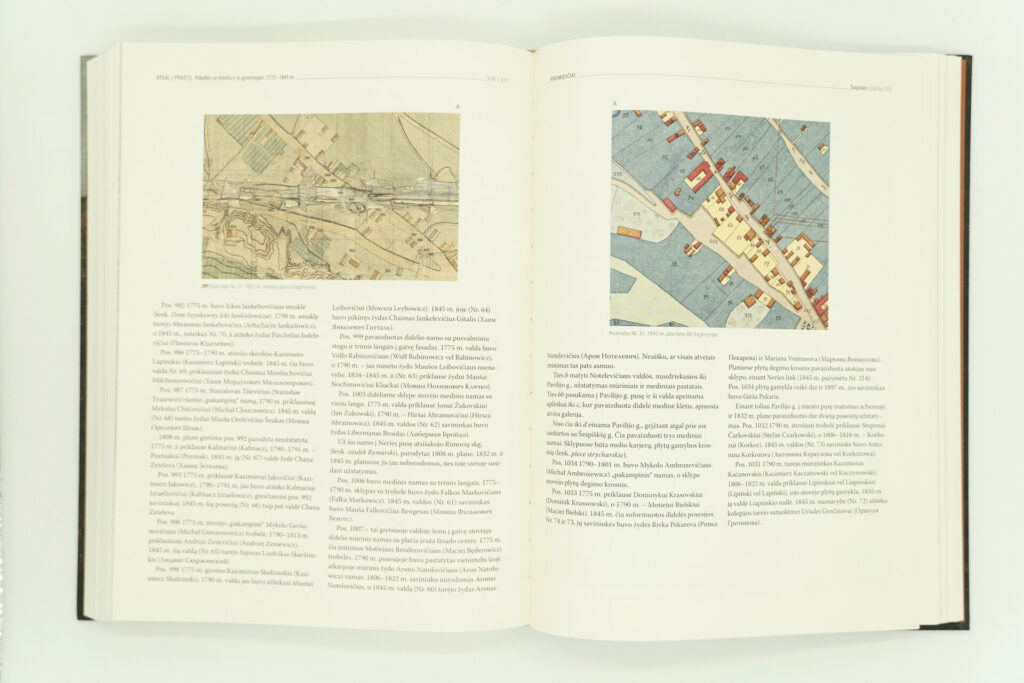Approaching the Vilnius Book Fair Lithuanian National Museum presents the publication of more than five years of research "Atrastas Vilnius. Cartographic and Sociotopographical Sources of Urban Layout". The book publishes cartographic material covering the old town and suburbs of Vilnius stored in the Russian military archives, which made it possible to recreate the city view that existed 200 years ago, a large part of which we will no longer see today, down to the smallest details.
This study was planned as a continuation of the previously published study "Vilnius City Plans", but it grew into a separate historical study that presented an intriguing result.
Lithuanian historians and architect restorers have been interested in the collections of cartography and iconography of cities that once belonged to the Russian Empire, accumulated in Russian archives, since the 20th century. the fifties.
"Vladas Drėma published part of the drawings of the facades of Vilnius in the book "Dingęs Vilnius", but during the investigation it turned out that there are many more of them than were published. Following in the footsteps of other historians who studied this material, it was noticed that a systematic study of the Lithuanian material accumulated in Russia was not carried out. And, apparently, that's why the images of Vilnius were not evaluated correctly", says the head of the study, art critic Assoc. Dr. Birutė Rūta Vitkauskienė.
The model of Vilnius, created in the 19th century
Researching archival material revealed that this important historical source for the city of Vilnius appeared in the 19th century, when it was decided to prepare a detailed model of the city of Vilnius. It was supposed to be a kind of demonstrative measure of how the military tsarist administration imagined "taming" post-rebellion Vilnius.
Also read
"At the end of the 1830-1831 uprising, six military engineers were sent to Vilnius, who within two years prepared drawings of the city's construction for the purpose of "creating a model". By order of the Russian Emperor Nicholas I, a model of the city of Vilnius with its suburbs had to be created. There is no information about its fate yet, but we know that it was made from notes left on the drawings. We can consider them a professionally made inventory of urban construction. No city in Lithuania has such a unique iconography", says B. Vitkauskienė.
Among the materials acquired in digital form by the National Museum of Lithuania are the 1832-1834 city plan, 38 street facades with drawings of city facades, and 13 block scheme drawings. These are intriguing collections of documents - full-color, architecturally accurate images and drawings designed to create a city layout.
The unique construction material of the Old Town and suburbs of Vilnius is surprising in its detail and is particularly important for the history of the city's urbanism. The drawings reflect the view of the streets of Vilnius at that time, which has already changed considerably today. They complement the well-known city plans of 1808 and 1845, showing a much more detailed layout of all blocks.
Discoveries of "Atrasto Vilnius".
This study is the most accurate testimony that has reached our days about how Vilnius looked 200 years ago, and shows the whole of the city as a living organism: the topography of the city, the construction of the entire old town.
The book consists of two broad sections examining historical and urban planning material, descriptions of each quarter, a catalog of cartographic material, a table of Vilnius urban names for the years 1795–1845, and an index of personal names. The collection of cartographic documents is complemented by city views, photographs, portraits - a total of 360 illustrations.
The authors of the book, Karolina Glinska and Birutė Rūta Vitkauskienė, set out not only to conduct a study of this material, but also to restore a complete picture of the city of Vilnius of this period, therefore the largest part of the publication is devoted to descriptions of all buildings in the city and their owners.
The archival sources and iconography used made it possible to better understand the history of the construction of Vilnius and to reconstruct its topography. In addition, the authentic iconography of those times, written sources were examined, and the owners of all estates from 1775 to 1845 were found out according to the lists of owners of city buildings and plots, which allows to restore the social portrait of the city's inhabitants. The cadastre information of Vilnius real estate owners from 1845 is particularly valuable, as the city was divided into estates at that time. The owners of some changed more often, others were controlled by the same family or clan from generation to generation.
"From the information about the owners presented in the book, it is possible to see the socio-topographical changes after the uprisings of 1794 and 1830-1831. From the capital of a large state, Vilnius became the center of the governorate, a lot of real estate was confiscated, governorate offices, military units appeared, street names changed. The book contains valuable data about Jewish life in Vilnius, synagogues and schools in the suburbs that no longer survive," says Karolina Glinska, one of the book's authors.
In 2023, the Lithuanian National Museum recreated the model in the "Vilnius 200 years ago" pavilion based on this material. Located at the foot of Mount Gediminas, the exhibition space on the occasion of the 700th anniversary of Vilnius gave an opportunity to see what the model created at that time might have looked like and invited to a unique acquaintance with Vilnius and the people of Vilnius 200 years ago.
This publication opens up wide opportunities for getting to know Vilnius in the 19th century, as this material has been difficult to access until now. The importance of the research is increased by the fact that the current geopolitical situation closed the Russian archives to researchers from Lithuania for a long time: this material was acquired just in time, and now everyone who wants to get to know it will be able to get acquainted with it.
The authors of the book are Karolina Glinska and Birutė Rūta Vitkauskienė. Artist Vida Ona Kuraitė. The publication can already be purchased in the e-shop of the Lithuanian National Museum and at the museum's cash desks. It will be presented at the Vilnius Book Fair on February 22. 13 p.m. in the conference hall 5.2.




